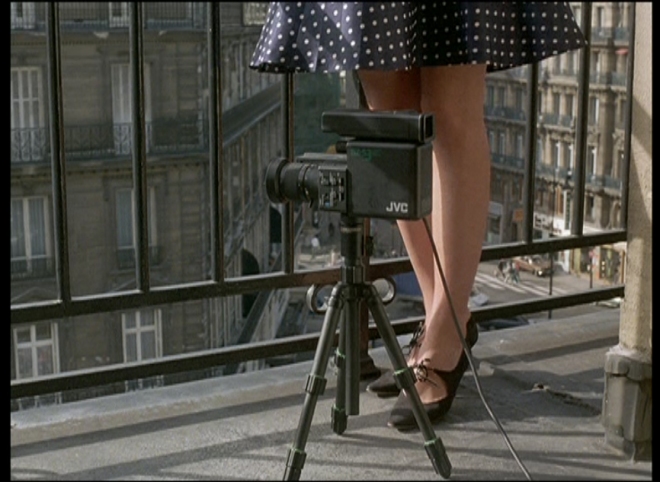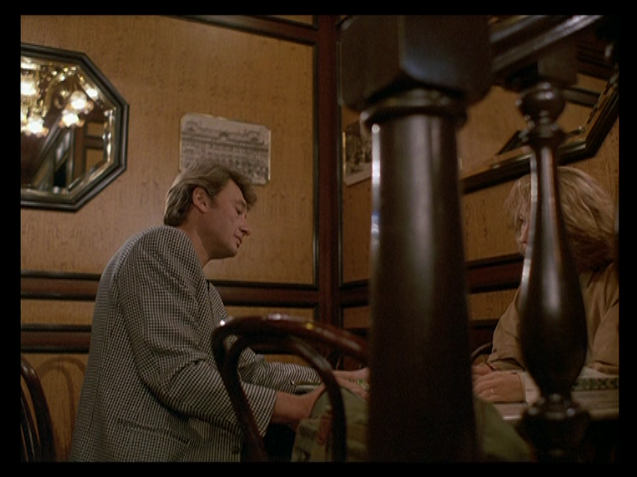Part Two: ‘Circles and Squares’ – Pauline Kael
II
Pauline Kael’s acerbic reply to Andrew Sarris’s ‘Notes on The Auteur Theory in 1962’ starts by examining the basic method or concept of the proposed auteur theory. Kael explains:
Sarris has noticed that in High Sierra (not a very good movie) Raoul Walsh repeated an uninteresting and obvious device that he had earlier used in a worse movie. And for some inexplicable reason, Sarris concludes that he would not have had this joy of discovery without the auteur theory.(1.)
Kael is asserting that the auteur theory venerates directors who repeat uninteresting and obvious devices. The supposed “joy” of the auteur theory, to Kael, is the celebration of a director’s usage in a bad film of a technique used in another earlier worse film. Kael also takes exception at the tone that Sarris uses in relation to the importance of the auteur theory in examining a director’s work as an organic whole. Kael asserts:
In every art form, critics traditionally notice and point out the way the artists borrow from themselves (as well as from others) and how the same device, techniques, and themes reappear in their work. This is obvious in listening to music, seeing plays, reading novels, watching actors; we take it for granted that this is how we perceive the development or the decline of an artist.(2.)
As Kael notes artists have always re-used older material. Leonardo di Vinci reused several sketches in many of his paintings and reputedly used a sketch of a young man as a template for the face of the ‘Mona Lisa’ – even though the Mona Lisa was based on a woman. What Kael seems to be asking is whether this is really a good criterion for the critique of film. Although noting the continued development of increasing technical ability, or competence in Sarris’s words, over an artist’s lifetime is important it is not often the only criterion of judgement. To Kael, a better area of critique, and the ultimate function of a critic, is ‘perceiving what is original and important in new work and helping others to see’.(3.) To Kael, Sarris concentrates on what is established, unoriginal in a work and ignores new ideas, one-offs and innovations. Kael asserts that the auteur critic only identifies how a film relates to a director’s past canon or filmography and ignores the new elements: what is “important” and makes something a new or original film.
Kael proceeds by exploring the three premises or criterion of judgement that Sarris sets out. Sarris’s three premises are:
- The technical competence of a director as a criterion of value.(4.)
- The distinguishable personality of the director as a criterion of value.(5.)
- Interior meaning… the tension between a director’s personality and his material.(6.)
To Kael the “outer circle”, or first premise , of a director’s basic technical competence, is either a weak premise, a commonplace attitude of artistic judgement – and therefore the auteur theory is not as radical or as “fresh” as it seemed to be as a critique of film in 1962 – or a complete misunderstanding of the necessarily talents required for the production of art. Kael notes ‘sometimes the greatest artists in a medium bypass or violate the simple technical competence that is so necessary for hacks’.(7.) Kael explains further that ‘the greatness of a director like [Jean] Cocteau has nothing to do with mere technical competence: his greatness is in being able to achieve his own personal expression and style’.(8.) Kael seems to arguing that although technical competence is important to a director its use as a criterion of judgement “misses the point” in the evaluation of director’s ability to make art. Cocteau once remarked that the only technique, in any art, one needs is the technique you invent for yourself and in relation to this Kael argues that ‘if [a director] can make great films without knowing the standard methods, without the usual craftsmanship of the “good director”, then that is the way [the director] works’.(9.)
The second criterion, and according to Kael the actual premise of the auteur theory, relates to the director’s distinguishable personality. Kael, in characteristically sardonic and bitchy style, explains that:
Traditionally, in any art, the personalities of all those involved in a production have been a factor in judgement, but that the distinguishability of personality should in itself be a criterion of value completely confuses normal judgement. The smell of a skunk is more distinguishable than the perfume of a rose; does that make it better?. (10.)
In essence Kael is arguing that the distinguishable personality of a director is a poor choice for criterion of judgement. One may be able to more distinctly distinguish the gaudy, accidental, clumsy hand of a second-rate director than the light, delicate hand of a first-rate director but it does not, or should not, indicate the better director between the two. Kael goes on to add:
When a famous director makes a good movie, we look at the movie, we don’t think about the director’s personality; when he makes a stinker we notice his familiar touches because there’s not mush else to watch. (11.)
Kael is asserting that the touch of a director – the evident touch – is an indicator of a poor film or at least a symptom of boredom and apathy towards the film’s narrative. If we can distinguish the director’s personality then it is not really a ‘part of the texture of the film’ and therefore it overrides and dominates the film itself.(12.) Kael also criticises Sarris’s second criterion of judgement, and the auteur position in general, by arguing that ‘it is an insult to an artist to praise his bad work along with his good; it indicates you are incapable of judging either’. Kael asserts that this form of analysis and criticism is similar to attitudes to fashion labels ‘this is Dior, so it’s good’.(13.) Kael position is that the auteur theory cannot, once a director is given the title of auteur, discriminate between the director’s good and bad work – especially if the director fulfils the criterion or premises of the auteur theory.
The third premise, or inner circle, is, according to Kael, ‘the opposite of what we have always taken for granted in the arts, that the artist expresses himself in the unity of form and content’.(14.) To Kael the auteur theory glorifies “trash”, ‘the frustrations of a man working against the given material’.(15.) The conflict of a director’s style with the content is what produces great art to the auteur, or at least to Sarris, but to Kael is it a weakness of a film. According to Kael if a director does not unify his style, the form, with the content of the script, then the director does not produce good art. Kael explains:
Their ideal auteur is the man who signs a long-term contract, directs any script that’s handed to him, and expresses himself by shoving bits of style up the crevasses of the plots. If his “style” is in conflict with the story line or subject matter, so much the better.(16.)
The consequence of admiring the directors who shove style up a script’s crevasse is that ‘the director who fights to do something he cares about is a square’.(17.) This statement is related to Sarris’s criticism of Ingmar Bergman’s later work which Sarris felt had declined due to the absence of any progression of ‘technique’ which directly related to Bergman’s ‘sensibility’.(18.) Kael responds harshly – rather too angrily for a really rational debate – but does pose an interesting question wondering whether ‘writer-directors are disqualified by [the] third premise?’.(19.) Kael sums up her criticism by wondering why the auteur theory prefers certain commerical films – a saving grace of the auteur theory some will say. Kael expands on this point by asserting that ‘those travelling in auteur circles believe that making [a] purse out of a sow’s ear is an infinitely greater accomplishment than making a solid carrying case out of a good piece of leather’.(20.) Kael’s harsh criticism of the auteur theory continues into the very last vitirolic paragraph when she argues:
These [auteur] critics work embarrassingly hard trying to give some semblance of intellectual respectability to a preoccupation with mindless, repetitious commercial products… They’re not critics: they’re inside dopesters.(21.)
The auteur critic, according to Kael, prefers products made out of inferior products: mindlessly repetitious commercial films. Kael’s article is an angry, sardonic, reply to Sarris’s auteur theory – she even questions whether an auteur critic is a critic at all – she has highlighted some problems and flaws in his conception of the primary criterion of judgement an auteur critic makes. In my next article (part III) I will conclude by examining both Sarris and Kael’s position. I will indicate where I feel both critics have got things right and got things wrong.
1. Pauline Kael, ‘Circles And Squares’, in Gerald Mast & Marshall Cohen (ed), Film Theory and Criticism: Introductory Readings, 2nd Edition, Oxford: Oxford University Press, (1979), pp. 666-679. p. 667.
2. Pauline Kael, ‘Circles And Squares’, pp. 667-668.
3. Pauline Kael, ‘Circles And Squares’, p. 669.
4. Andrew Sarris, ‘Notes On The Auteur Theory In 1962’, in Gerald Mast & Marshall Cohen (ed), Film Theory and Criticism: Introductory Readings, 2nd Edition, Oxford: Oxford University Press, (1979), pp. 650-665, p. 662.
5. Andrew Sarris, ‘Notes On The Auteur Theory In 1962’, p. 662.
6. Andrew Sarris, ‘Notes On The Auteur Theory In 1962’, p. 663.
7. Pauline Kael, ‘Circles And Squares’, p. 669.
8. Pauline Kael, ‘Circles And Squares’, p. 669.
9. Pauline Kael, ‘Circles And Squares’, p. 670.
10. Pauline Kael, ‘Circles And Squares’, p. 671.
11. Pauline Kael, ‘Circles And Squares’, p. 671.
12. Pauline Kael, ‘Circles And Squares’, p. 672.
13. Pauline Kael, ‘Circles And Squares’, p. 673.
14. Pauline Kael, ‘Circles And Squares’, p. 674.
15. Pauline Kael, ‘Circles And Squares’, pp. 674-675.
16. Pauline Kael, ‘Circles And Squares’, p. 674.
17. Pauline Kael, ‘Circles And Squares’, p. 674.
18. Andrew Sarris, ‘Notes On The Auteur Theory In 1962’, pp. 662-663.
19. Pauline Kael, ‘Circles And Squares’, p. 676.
20. Pauline Kael, ‘Circles And Squares’, p. 678.
21. Pauline Kael, ‘Circles And Squares’, p. 679.

















